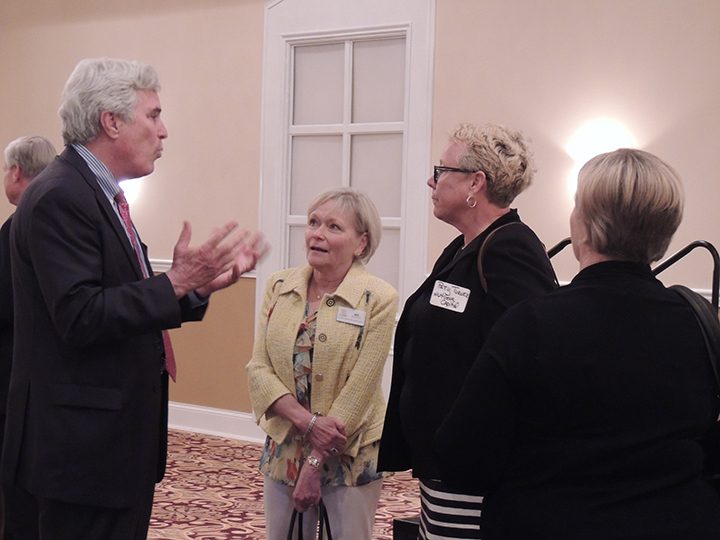By Mark Ambrogi
The concept of city vs. suburb in building a metropolitan region is passé, Christopher Leinberger said.
“I would suggest you throw that out, that’s very 20th century,” said Leinberger, a metropolitan land strategist and George Washington University professor. “The new way of looking how we build our metropolitan region is walkable urban vs. drivable suburb/urban.”
Leinberger presented the study Foot Traffic Ahead at the OneZone meeting June 8 at 502 East Event Centre in Carmel. Leinberger and Michael Rodriguez recently did a study of the large 30 metropolitan areas in the nation, which doesn’t include Indianapolis. But Leinberger was asked by Indianapolis officials to see how Indianapolis would fit in the 30 largest metros.
WalkUps (Walkable Urban Places) are defined as having the characteristics of office space (1.4 million square feet) and/or retail space (340,000 square feet). Indianapolis has an average WalkScore of 29 out of 100. Carmel Arts District has a WalkScore of 77 and downtown Fishers 81. The highest in a metro area was downtown Indianapolis at 94 and Broad Ripple at 90. Leinberger said WalkScores 70 and above are considered desirable.
Leinberger said the study shows Walkable Urban Places attracts more highly educated persons and that drives GDP per capita.
“These are very high correlations,” Leinberger said.
While housing costs are lower than most, Leinberger said Indianapolis-area transportation costs are 28th out of 30 metropolitan areas.
“If they could shift their spending into housing, that spending will appreciate over time,” Leinberger said. “The transportation system you build will dictate the type of development you get. You need the BRT (bus rapid transit), it’s absolutely critical.”
Bicycle paths are important as well, Leinberger said.

